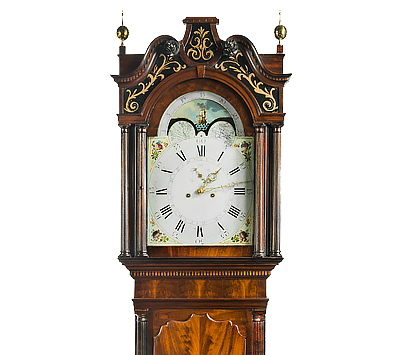Clock Chime Selection
Many clocks give you a selection of the chime your want to hear, as well as silent. Do not attempt to move the chime selection lever while the clock is chiming. Doing so could damage the chime mechanism. When moving the lever off from silent, let the first chime selection play through completely before moving the lever to another chime option. The chime lever can be found coming through the dial face, usually near the number 3.
Chime Hammer Adjustment
The hammers were adjusted at National Clock Repair and should be in the proper location. If, however, you find that the hammers moved during shipping, you can adjust them without difficulty. On clocks with chime rods, the hammer rods (2G) are made of brass and can be easily bent without harm. Adjust them so that they do not interfere with each other when moving. The hammers should strike the chime rod squarely in the center and should rest 3mm (1/8″) away from the chime rods when not striking (see figure 2B).
On clocks with tubular gongs the hammers are adjusted by turning the thumb screws on top of the movement. (The thin strings are attached to these screws.) Turn the thumb screw until the hammer head is 3mm (1/8″) away from the gong tube. Do this adjustment when the movement is not striking.

Figure 2B

Ship Your Clock for Expert Repairs!
Expert Shipping Instructions!

Grandfather Clock Service Calls
We make Grandfather Clock service calls!

Contact Us
Feel free to contact us any time at (215) 862-2415.

Further Questions?
We'd like to hear from you!
People Say




